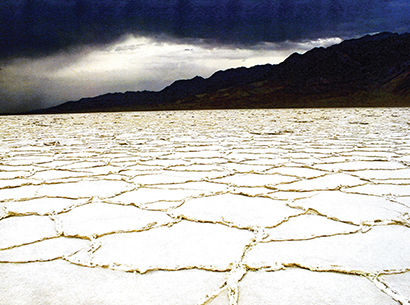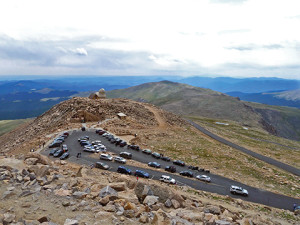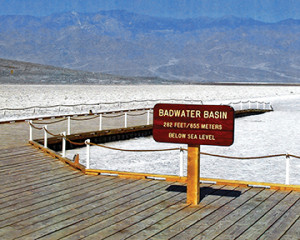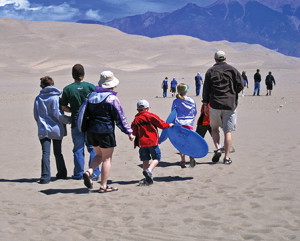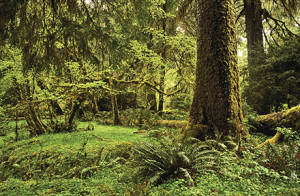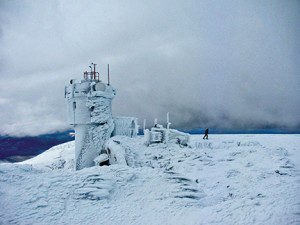“…Ests” Places in the U.S.
Posted on January 31, 2015 by bob in Travel
by Andrea Gross; photos by Irv Green
I’m a sucker for superlatives — highest, hottest, etc. My personal bucket list demands I visit as many “ests” as possible, places that hold the record for being, in some way, the very best of their category.
I thought compiling the list would be simple, especially after I limited it to the U.S., but of course it wasn’t. I ran into myriad problems of measurement and definition. Eventually I came up with my own criteria, based as much on practicality and desirability as on quantifiable data. Here are my recommendations for the Best of the Ests:
Highest
I have no intention of actually climbing the tallest peak, which rules out Alaska’s Mt. McKinley (20,237 feet), yet I want
to do more than peer toward the heavens. Thus, I head for Colorado’s Mount Evans. At 14,265 feet, Mount Evans is a pigmy among giants, but—and this is important—it’s home to the highest paved road. This means you can drive almost all the way to the country’s highest parking lot, walk a mere quarter mile to the summit and voila’, you’re standing atop the highest reasonably accessible peak in the U.S.
The highway was built between 1917 and 1927 as a means of drawing tourists. It worked. Today the scenic drive—a two-lane ribbon that winds between towering evergreens, open meadows and lovely alpine lakes—is one of Colorado’s top attractions. But be forewarned, the road is closed during winter, usually starting in September. You can still hike or bike to the top, but you can’t drive.
Lowest
Choosing the lowest spot is easy. Since I quickly rule out deep-sea diving and descending into a mine, I’m left with Death
Valley, California, which is the lowest point of dry land that was formed by nature as opposed to created by man-and-shovel.
The Valley’s precise lowest point (282 feet below sea level) is near Badwater Basin, which sits amidst nearly 200 square miles of salt flats.
A boardwalk lets visitors walk part way into the basin, but most folks step down onto the actual flats. The landscape is bizarre but beautiful, a pattern of interlocking shapes created by the valley’s unique combination of extreme heat, minimal rainfall and low elevation.
Driest
Here I run into trouble. Calexico, a small town on the California-Mexico border, has the lowest annual rainfall, but Death Valley has the most consecutive days with no rainfall.
In the end I opt for neither. In my mind, “dry” suggests a place where I can mount a camel and ride endless miles across towering sand dunes. Calexico is dune-less,
and while Death Valley has dunes, they aren’t record-setters. For that I have to go to Great Sand Dunes National Park in Colorado, which although devoid of camels has 750-foot tall sand piles, the highest in North America.
Later I learn that the dunes aren’t really dry. In fact, it’s the moist layer of sand right under the surface that holds the upper dry sand in place. But that’s okay. At this point in my Quest-Est, I’m more concerned with imagery than scientific accuracy.
Wettest
As for the wettest place, I must choose between the soggiest land or the drippiest sky. Since I don’t have a pair of wet boots but own several umbrellas, I decide on Hawaii’s Mount Waleleale. Then I learn that the mountain’s average rainfall exceeds 38 feet a year — a fact that greatly dampens my enthusiasm (pardon the pun) — so I restrict my search to the contiguous U.S. and end up on Washington’s Olympic Peninsula.
While the Aberdeen Reservoir is the rainiest place with 130.6 inches a year, Forks, Washington, is the rainiest town with 120 inches a year. More important, it’s given this accolade not only by the National Climatic Data Center, but also by Stephenie Meyer, who used it as a setting for her Twilight book series. Why, I may even spot a vampire along the shore or amidst the trees. This makes Forks a double superlative—winner of both the wettest and the weirdest categories.
Coldest
Once I exclude non-contiguous Alaska, Rogers Pass, Montana, holds the record for a one-day temperature low (-70ºF). However, the peak of New Hampshire’s Mount Washington wins the title for all-time year-around cold (annual average temperature of 27º). In addition, with wind gusts that sometimes reach more than 230 mph, it’s also considered the windiest place in the United States.
Therefore, with masochistic determination, I head to the summit. The road is steep, narrow and bordered with deadly drop-offs, but the view on top is spectacular. What’s more, at the Weather Discovery Center in nearby North Conway, I learn Mount Washington holds bragging rights to the best Est of all: Home of the World’s Worst Weather.
It’s a perfect way to end my search. The title of “Worst” makes Mount Washington the “Best.”
Resources
Highest: www.mountevans.com
Lowest: www.nps.gov/deva/index.htm
Driest: www.nps.gov/grsa/index.htm
Wettest:www.forkswa.com
Coldest: www.mountwashington.org










